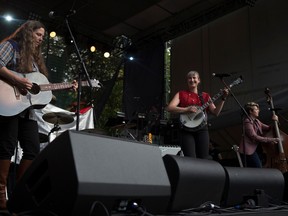Readers offer their opinions on arts funding in Saskatchewan and past solutions for affordable housing and health care and eduction funding.

Article content
The arts and creative industries add economic and social value to our province and country. The sector builds stronger and happier communities, gives us a sense of belonging and civic pride, improves mental health, increases innovative thinking in our students, and contributes to the province’s GDP.
SK Arts’ funded organizations contribute $74 million to the provincial economy, while receiving $5.4 million in provincial funding. For every $1 invested by the provincial government, SK Arts funded organizations generated $13.70 of economic output.
Advertisement 2
Article content
Article content
SK Arts funded organizations were responsible for supporting 819 full-time equivalents within the province. For every $100,000 invested by the province, SK Arts’ funded organizations created 15 full-time equivalents.
Current funding to SK Arts is well below historical levels — approximately $180,000 less than a decade ago, which has not even come close to keeping up with the provincial Consumer Price Index.
With the rising cost of living and the six per cent increase in ticket prices due to the 2022 provincial sales tax expansion, the arts have become less affordable and, therefore, less accessible to many individuals and families in this province.
Some arts organizations are at risk of closing their doors for good. The arts and culture sector is contributing more than ever to the province’s revenue, and all we ask of the provincial government is that SK Arts receive consistent, stable funding to match inflation.
We encourage you to attend an arts event in your community and show your support.
Em Ironstar (executive director of Saskatchewan Arts Alliance), Regina
Article content
Advertisement 3
Article content
Look to past on health, education, housing
In recent weeks there has been a lot of discussion about the situations with education, health care and affordable housing. I cannot recall when the taxation system was first implemented, but way back we had what we referred to as the education and health tax.
That tax revenue specifically funded these two services sufficiently and worked well. Service, supply and staffing for these services was never an issue back then. Then they came up with the provincial sales tax system and it all went into the general revenue drawer.
Some, of course, did find its way into education and health care, but the departments were sort of always begging for more funding as such.
Amid the funding crunch for health and education, affordable housing for first-time home buyers has also become a concern. This takes me back to the late 1970s and a program called the Assisted Home Ownership Program.
This federal government funded program was implemented by several home builders in the city. They built homes in several Saskatoon neighbourhoods, all on 50-foot lots and home plans of around 1,000 square feet. For yes, first-time home buyers.
Advertisement 4
Article content
And many did build equity and raise their families in those homes. Maybe the government and the cities should be working with the builders to return to this type of affordability home ownership program.
Doug Wilson, Saskatoon
Article content



